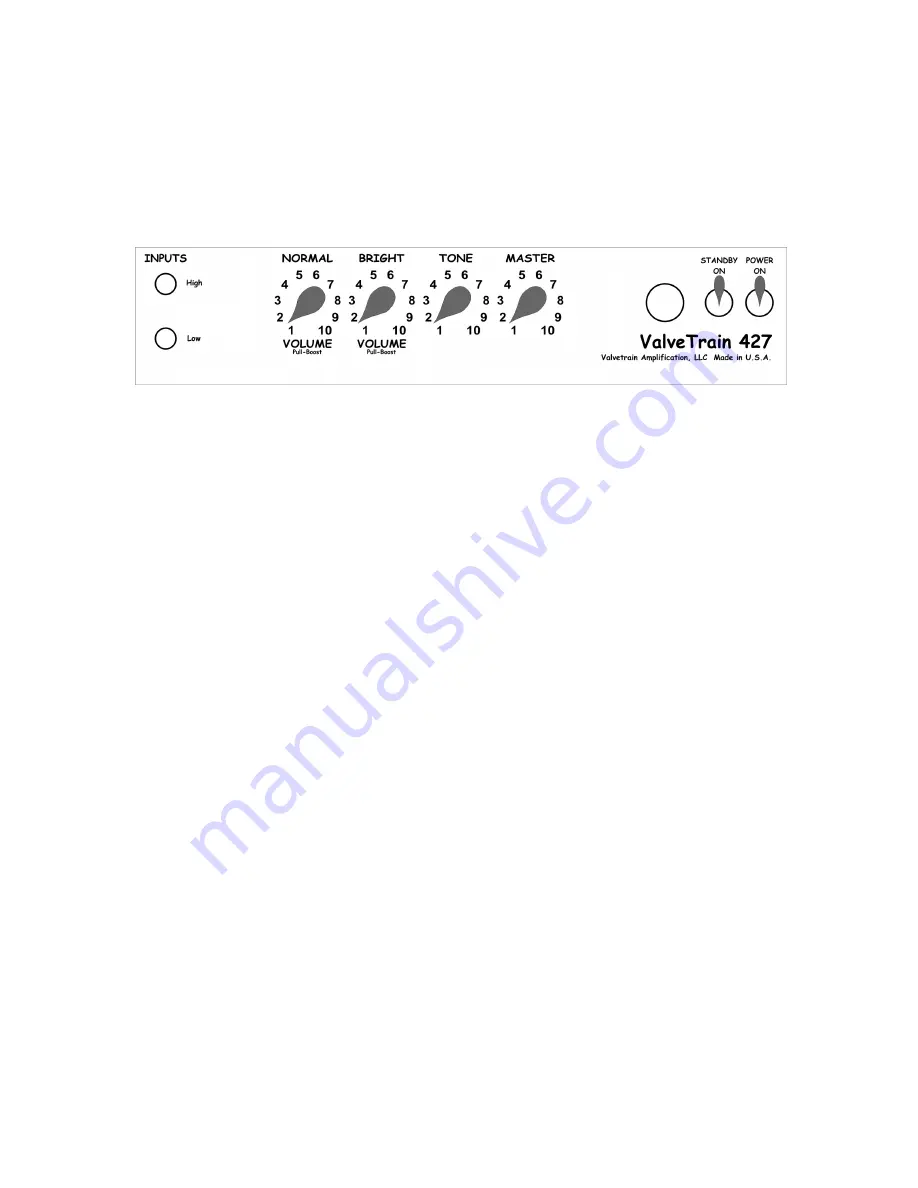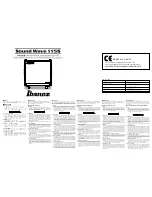
ValveTrain Amplification, LLC
Page 4
ValveTrain 427 User Manual
Operating The Amplifier
The control panel of the ValveTrain 427 looks like this:
There is a great deal of tonal flexibility in the controls of this amplifier.
There are 2 input hacks on the amplifier marked High and Low. These marking reflect the gain
characteristic of each input.
There are 4 rotary controls and 2 pull switches on the control panel.
Master Volume – Controls the overall loudness of the amplifier. Using reduced setting on this control
along with high settings of the Normal and Bright Volumes may be used to produce an overdrive sound.
Tone - Controls the overall brightness (Treble response) of the amplifier. Lower settings are darker and
higher numbers are brighter.
Volume Controls - Probably the most interesting aspect of the 427 is the design of the initial gain stages.
There are 2 volume controls, one for the Normal channel and one for the Bright channel. The two channels
are internally isolated and “jumpered”. This means that the player is able to blend the tonality of each
channel into the overall mix. Because the channels are both active, the preamp tube is running in parallel
operation producing more gain than is normally found in an amp of this style. Turning either volume
control down, which eliminates that channel, returned the tone of the amp back to single voice operation.
There are also two boost switches that activate a gain and low frequency boost on each channel. These act
similar to a “Loudness” switch that you would find on a stereo receiver. Depending on the chassis style,
these boot switches may be pull boost on the volume controls, or separate toggle switches.
By controlling the boost on one channel or the other (as well as using neither or even boosting both at the
same time), blending of the two distinct voices of the channels really opens up the tonal palette of this amp.
























